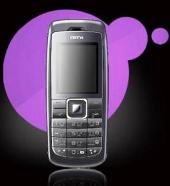 Onida's entry into mobile phones a year and a half ago has been a low-key affair. But not any longer, courtesy its television advertisement which plays on the brand name Nokia phonetically.
Onida's entry into mobile phones a year and a half ago has been a low-key affair. But not any longer, courtesy its television advertisement which plays on the brand name Nokia phonetically.
Nokia India has finally approached the Advertising Standards Council of India against the ad, prompting the council's secretary-general Allen Colaco to write to Onida asking for a response within two weeks.
While Onida executives say they have no knowledge of receiving any such letter, Nokia's marketing director Vineet Taneja says the company has urged the council to take stringent action.
While that's something Mirc, the owner of the Onida brand, will have to deal with, the controversy has indirectly done what the company expected the ad to do -- create awareness that the company had got into mobile phones, finally Onida has launched 25models since its soft launch in the middle of 2008.
"We did not want to be too loud then," says Sriram K, vice-president, sales, service & marketing, Onida.
This silence was strategic in a sense. In a market that is getting crowded by the day, and is dominated by brands such as Nokia, Samsung, LG, Motorola, Sony Ericsson, HTC, Blackberry, etc, Mirc needed to find its feet.
There was no way the newbie could have taken on the big boys back then. It had to get its act together on many fronts -- product, price, manufacturing. Sriram says the company has been focusing on these very attributes.
"Our product development happens in China," he says.
"But we own the design, tooling and customer interface. That is key," he says.
The price point goes from Rs 1,000 to Rs 10,000 where the bulk of the market is. The basic models are covered and so are slightly higher-level devices or 'feature-rich models' that are not heavy on the pocket. So young, working executives, even college-going youth, can purchase these products.
That's the target group that Mirc is focusing on, anyway.
With cumulative sales of handsets per-year pegged at over 100 million in India, Mirc knows there is still room for all at this stage.
"It's an attractive market to be, given the potential that exists in rural areas. There is a large replacement market as well, which makes it exciting for players to be," says Sriram.
With teledensity in rural areas at about 16 per cent as against urban areas which is over 90 to 95 per cent, especially, in metro cities, the thrust of most players is on the rural market.
The sub-Rs-3,000 range in particular is where much of the action is concentrated as far as rural markets go.
But the replacement market is equally exciting, which means that players have to be on their toes in terms of identifying consumer trends and being ahead of the curve.
Mirc is playing up its features aggressively -- dual sim, extended battery life, voice modulation, Indian calender etc -- to draw consumers to its fold.
"We are heavy on features," says Sriram. It is this aggression that led to the audacious Dimaag Nahi Hai Tabhi Toh No Kiya in its commercial for its mobile phones, which riled rival Nokia no end.
Sriram says the commercial -- on for a month -- has practically run its course.






